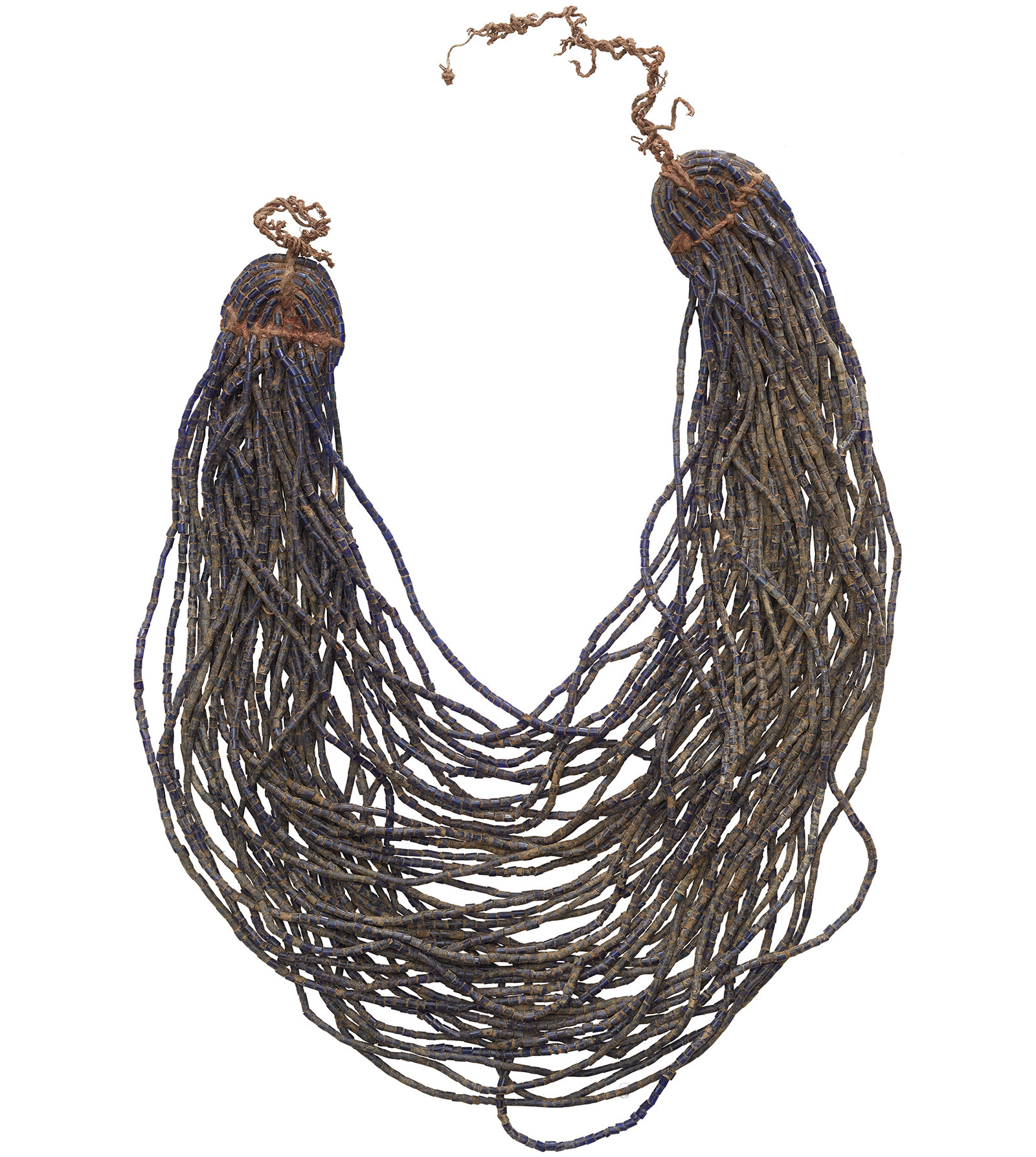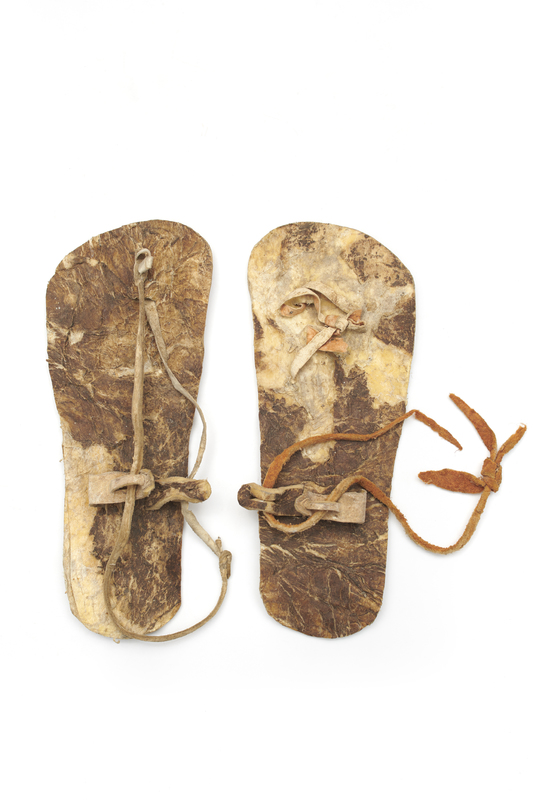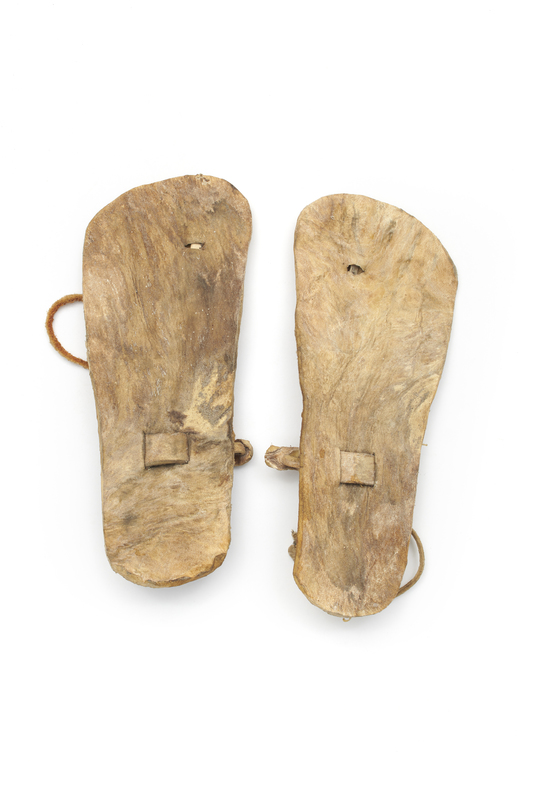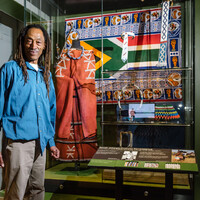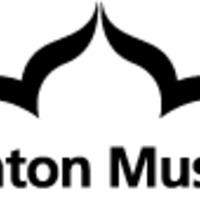Sandals; Rampeetshane; Rampechana
Item
Title
Sandals; Rampeetshane; Rampechana
Creator
Unrecorded
Description
Physical Description: Pair of flat leather sandals with thin leather straps, made from the skin of the forehead of a cow.The top surface shows the natural colouration of the animal hide, in mottled tan and brown.
Contextual Description: 02:26:01 SL: he says this is called rampechana people remember that. To show us that he is from the yesteryears he even told us where you’d get the sole of this, it is from the forehead, or it could be from the [jowls?] those would be the parts that you would use for making the underside of these.He says he has used them very much
RHH: Who makes these?
SL: Mostly old men, they would make them for boys to protect their feet. When you were old enough you could make for yourself. He has never made one for himself because as he was growing up there was more westernisation so people were like no, no longer interested.
He also remarked on how much noise these kind of shoes would make.
We have some SeTswana riddles there is one that goes ‘billy goat makes a noise and when it comes to the river, it shuts up.’ And the answer was rampechana these kind of sandals, cos you’d be coming with these making a lot of noise but when you come to the river you are forced to take them off otherwise you are going to lose them. Transcription by KL of MAC_BB_20190817_RPM3 SL Interview with Tshupo Ntono, Village Elder, Language: Setswana with English translations by SL, 2019
RHH: Who makes these?
SL: Mostly old men, they would make them for boys to protect their feet. When you were old enough you could make for yourself. He has never made one for himself because as he was growing up there was more westernisation so people were like no, no longer interested.
He also remarked on how much noise these kind of shoes would make.
We have some SeTswana riddles there is one that goes ‘billy goat makes a noise and when it comes to the river, it shuts up.’ And the answer was rampechana these kind of sandals, cos you’d be coming with these making a lot of noise but when you come to the river you are forced to take them off otherwise you are going to lose them. Transcription by KL of MAC_BB_20190817_RPM3 SL Interview with Tshupo Ntono, Village Elder, Language: Setswana with English translations by SL, 2019
Contextual Description: WT 1:20:53
The kalanga (I don't know whether they're getting this from the devil) - they call it batata
[Batata is a little demon in the Kalanga Zezuru languages. Batata in reference to footwear comes from Bata shoes that were produced in Britain and became popular in Southern Africa. Growing up we called school and formal shoes “Di-Bata” - TS note]
SL 1:23:34
and they have always made them like this.
GK 1:23:38
In this description... [reading from archive document] 'Molepo - a strip of raw hide which is laced through the sole'
SL 1:23:38
...even the Molepo would be be like a more descriptive of a handle that's not a handle
GK 1:23:57
[reading from document] 'If the sandle wearer gets his feet chafed, they will be chafed by the molepo on either side of the foot'
SL 1:24:21
Maybe they spoke differently. Yeah, but what is he talking about? And I think that's why even amongst the san hunters, the sandal is still popular. Of course the sole is made out of dry hide. Yeah, sometimes it can it can make a sound or alarming sound if you're trying to like get closer to some animal. If you step on some dried twigs or leaves. Then there you are, both hands are occupied. You're holding your bow and arrow, you want to shoot this animal so you have no chance of taking them out using your hands. So what you do is just like wipe them out that way use your heel to loosen this leather strap along the other side, just like that, then you leave them on the spot. Now you use your feet and you don't make too much noise. The sole is from the the forehead from a cow... that's what they will use.
WT 1:25:33
But how secure was this? How safe was this from thongs breaking?
GK 1:25:44
I think it helps ...
SL 1:25:45
They are very, very, very, very, very new. Highly thorn resistant. Even even what do you call it? The stubborn one...it can't go through.
JM 1:26:01
OK so you've called these rampechana, but they're calling them dithlako
SL 1:26:07
dithlako means shoes generally.
WT 1:26:09
Yeah. Even teckies would be dithlako [teckies=Afrikaans derivative for tennis shoes and ditlhako is the Tswana/Sotho word for shoes – TS note]
SL 1:26:14
That's the general term for shoes.
The above notes are from a transcription by Kathleen Lawther of a discussion between Gase Kediseng, JoAnn McGregor, Nicola Stylianou, Scobie Lekhuthile and Winani Thebele which took place at the Khama III Memorial Museum on the 5th of August 2019. To listen to the full recording please follow the link below.
The kalanga (I don't know whether they're getting this from the devil) - they call it batata
[Batata is a little demon in the Kalanga Zezuru languages. Batata in reference to footwear comes from Bata shoes that were produced in Britain and became popular in Southern Africa. Growing up we called school and formal shoes “Di-Bata” - TS note]
SL 1:23:34
and they have always made them like this.
GK 1:23:38
In this description... [reading from archive document] 'Molepo - a strip of raw hide which is laced through the sole'
SL 1:23:38
...even the Molepo would be be like a more descriptive of a handle that's not a handle
GK 1:23:57
[reading from document] 'If the sandle wearer gets his feet chafed, they will be chafed by the molepo on either side of the foot'
SL 1:24:21
Maybe they spoke differently. Yeah, but what is he talking about? And I think that's why even amongst the san hunters, the sandal is still popular. Of course the sole is made out of dry hide. Yeah, sometimes it can it can make a sound or alarming sound if you're trying to like get closer to some animal. If you step on some dried twigs or leaves. Then there you are, both hands are occupied. You're holding your bow and arrow, you want to shoot this animal so you have no chance of taking them out using your hands. So what you do is just like wipe them out that way use your heel to loosen this leather strap along the other side, just like that, then you leave them on the spot. Now you use your feet and you don't make too much noise. The sole is from the the forehead from a cow... that's what they will use.
WT 1:25:33
But how secure was this? How safe was this from thongs breaking?
GK 1:25:44
I think it helps ...
SL 1:25:45
They are very, very, very, very, very new. Highly thorn resistant. Even even what do you call it? The stubborn one...it can't go through.
JM 1:26:01
OK so you've called these rampechana, but they're calling them dithlako
SL 1:26:07
dithlako means shoes generally.
WT 1:26:09
Yeah. Even teckies would be dithlako [teckies=Afrikaans derivative for tennis shoes and ditlhako is the Tswana/Sotho word for shoes – TS note]
SL 1:26:14
That's the general term for shoes.
The above notes are from a transcription by Kathleen Lawther of a discussion between Gase Kediseng, JoAnn McGregor, Nicola Stylianou, Scobie Lekhuthile and Winani Thebele which took place at the Khama III Memorial Museum on the 5th of August 2019. To listen to the full recording please follow the link below.
Publisher
Making African Connections
Date
Pre 1899
Type
PhysicalObject
Format
Whole: 260 mm x 100 mm x 3 mm
Leather; Hide
Identifier
R4007/73
Source
Collected by Reverend William Charles Willoughby, a Christian missionary, in what was then the Bechuanaland Protectorate (1885-1966). It is now the Republic of Botswana, having gained independence from Britain in 1966.
From 1889-92 Willoughby was pastor at Union Street Church, Brighton (now The Font pub). From 1893 to 1898 he worked for the London Missionary Society in Bechuanaland. He assembled this collection of objects during this period. This was a period of social and technological changes and these objects represent traditional lifestyles and skills, rather than the contemporary lives of the people Willoughby met.
Willoughby's collection was loaned to Brighton Museum in 1899 when he returned to the UK. The loan was converted into a donation in 1936, and accessioned as acquisition R4007.
Some objects were re-numbered with the WA (World Art) numbering system in the 2000s. These numbers have been reverted to the original R4007/... numbers where possible for consistency in 2019.
From 1889-92 Willoughby was pastor at Union Street Church, Brighton (now The Font pub). From 1893 to 1898 he worked for the London Missionary Society in Bechuanaland. He assembled this collection of objects during this period. This was a period of social and technological changes and these objects represent traditional lifestyles and skills, rather than the contemporary lives of the people Willoughby met.
Willoughby's collection was loaned to Brighton Museum in 1899 when he returned to the UK. The loan was converted into a donation in 1936, and accessioned as acquisition R4007.
Some objects were re-numbered with the WA (World Art) numbering system in the 2000s. These numbers have been reverted to the original R4007/... numbers where possible for consistency in 2019.
William Charles Willoughby
Botswana, Southern Africa, Africa
1893-1898
Space/Place
Botswana, Southern Africa, Africa
Cultural Group: Khoisan; Basarwa
Rights
Creative Commons Attribution-ShareAlike 4.0 International
Item sets
Linked resources
Filter by property
| Title | Alternate label | Class |
|---|---|---|
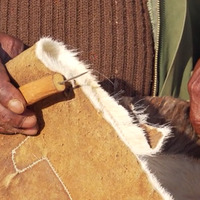 Leatherwork Leatherwork |

